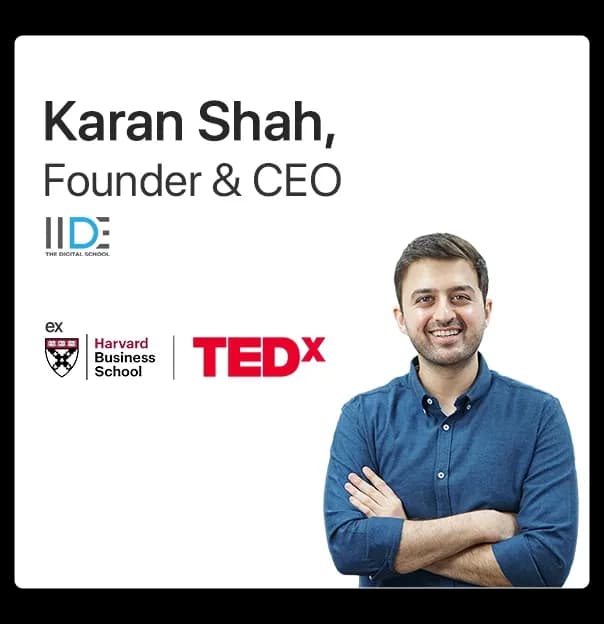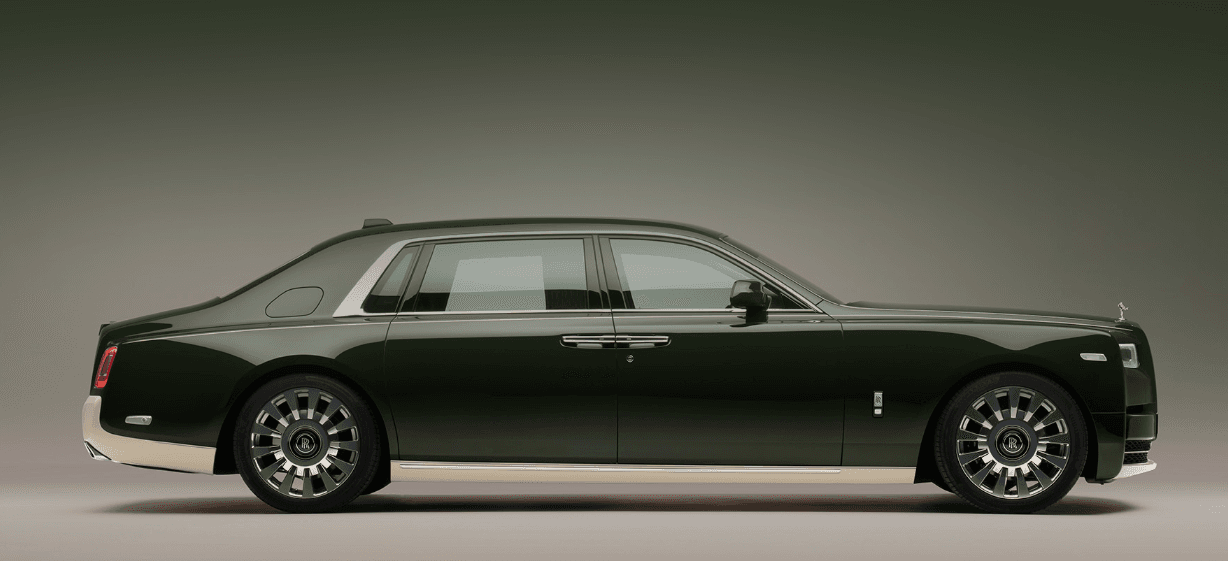🚀 Just Launched — Our New Undergraduate Program in Digital Business & Entrepreneurship is Here: Explore Now!
Rolls-Royce employs a highly exclusive marketing strategy, focusing on personalized experiences and elite clientele. Key marketing channels include private events, bespoke design consultations, and collaborations with luxury brands like Hermès.
The brand educates its audience by emphasizing craftsmanship, heritage, and the art of personalization, positioning its vehicles as unique works of art tailored to individual tastes.
Aditya Shastri
Lead Trainer & Business Development Head at IIDE
Updated on: Jul 16, 2025
About Rolls-Royce

Rolls-Royce is a British luxury automobile manufacturer renowned for producing the world’s most exclusive and finest motor vehicles. Known for craftsmanship, precision engineering, and unparalleled personalisation, Rolls-Royce specialises in ultra-luxury cars like the Phantom, Wraith, and Cullinan. The brand delivers a tailored experience for high-net-worth individuals globally, with each vehicle being a bespoke creation.
Industry/Category
Rolls-Royce operates in the luxury automobile sector, a market that thrives on exclusivity and innovation. In 2025, key trends include sustainability and personalisation, with Rolls-Royce embracing these by offering eco-friendly materials and advanced customisation options.
Founding Information
Founded in 1904 by Charles Rolls and Henry Royce, Rolls-Royce was born from their vision of creating "the best car in the world," a vision that continues to define the brand's reputation.
Growth Trajectory
Rolls-Royce has maintained steady growth, with a 19% increase in global sales in 2024. The brand operates in over 50 countries and has become a global symbol of luxury and exclusivity.
Competitors
Competing with brands like Bentley and Ferrari, Rolls-Royce stands out by offering the most bespoke, personalised luxury experience.


Learn Digital Marketing for FREE


Marketing Objective or Business Challenge
In 2025, Rolls-Royce faced the challenge of maintaining its exclusive luxury image while expanding into emerging markets, such as Asia and the Middle East.
The primary goal was to reinforce brand recall and boost engagement with a younger, affluent audience who were increasingly looking for personalised luxury experiences.
The brand needed to educate consumers on its bespoke design process while maintaining its reputation for unmatched craftsmanship.
Additionally, Rolls-Royce aimed to drive awareness without compromising its premium positioning in the marketplace.
Key hurdles included market penetration, overcoming consumer hesitation in new markets, and addressing low brand recognition in regions unfamiliar with ultra-luxury vehicles.
The challenge also involved strong competition from other high-end brands like Bentley and Ferrari, requiring Rolls-Royce to differentiate itself through its heritage, personalisation options, and exclusive experiences.
Buyers Persona:

Robert
Mumbai
Occupation: Finance Manager
Age: 45 years
Motivation
Interest & Hobbies
Pain Points
Social Media Presence
Marketing Channels Used by Rolls-Royce

Main Channel for Marketing
Rolls-Royce uses a hybrid marketing strategy, combining traditional luxury methods with digital innovation to reach its high-end clientele while staying exclusive.
Traditional Marketing
- Print Media: Rolls-Royce is featured in luxury magazines like Vogue and Robb Report, focusing on craftsmanship and exclusivity.
- Events & Sponsorships: The brand hosts invitation-only events and works with luxury brands to strengthen its elite status.
- Word-of-Mouth: The brand relies on satisfied customers who act as ambassadors, maintaining the brand’s exclusivity.
Digital Marketing
- Social Media: Rolls-Royce shares high-quality content on Instagram, LinkedIn, and Facebook to engage with its select audience.
- SEO & SEM: The brand uses SEO and paid search to target potential high-net-worth customers online.
- Influencer Marketing: Collaborates with luxury influencers to reach a broader audience while staying exclusive.
- Virtual Showrooms: Customers can customise their vehicles through online tools for a bespoke experience.
Rolls-Royce Marketing Strategy Breakdown
Digital Marketing
SEO & SEM:
Rolls-Royce collaborates with agencies like THAT Agency to enhance its online presence. Efforts include optimising search engine rankings and refining paid search campaigns.
For instance, Rolls-Royce Motor Cars of Palm Beach experienced a 44% growth in organic and local search results over the past year.
Social Media Engagement:
The brand maintains a strong presence on various social media platforms, including Instagram, LinkedIn, Facebook, and Twitter.
Through high-quality content and strategic community management, they achieve an engagement rate exceeding 17%, surpassing the industry average of 7-12%.
Content Strategy
The Journal:
Rolls-Royce's online magazine, "The Journal," serves as a cornerstone of its content marketing.
It features articles and videos that highlight the brand's craftsmanship and innovation, resonating with high-net-worth individuals who value luxury and exclusivity.
Influencer Partnerships
Collaborations with Luxury Influencers:
Rolls-Royce partners with influencers in the luxury and lifestyle sectors to expand its reach.
These collaborations help enhance the brand's image and connect with a broader, yet targeted, audience.
Experiential Marketing
Virtual Showrooms & Bespoke Configuration:
Rolls-Royce offers online tools that allow potential customers to customise their vehicles, providing an immersive and personalised experience.
This approach aligns with the brand's commitment to innovation and customer-centricity.
Results & Impact
Rolls-Royce’s marketing strategy has shown remarkable success in 2025. Here are some key highlights, results, and impact:
- Sales: Rolls-Royce achieved a record revenue of £984.2 million in 2025, reflecting a growth of 10.9% compared to the previous year. Their sales volume for the year reached over 6,000 vehicles, further solidifying their position in the luxury market.
- Website Traffic: Rolls-Royce’s website saw significant growth, with 11.9 million visits in 2025, driven by a robust SEO strategy. Around 37% of this traffic came from organic search, showcasing the effectiveness of their content optimisation.
- Social Media Engagement: Social media interactions surged with engagement rates exceeding 17%, surpassing industry averages. Rolls-Royce capitalised on influencer collaborations and digital content to connect with younger, affluent buyers, with campaigns such as #RollsRoyceBespoke gaining traction.
- SEO & Search Visibility: The brand achieved higher keyword rankings for luxury car-related searches, increasing its organic search traffic by 15%. This helped drive high-value leads and boosted online visibility.
- Bespoke Program & Customisation: Rolls-Royce’s Bespoke Program witnessed record growth, with more than 70% of customers opting for customised designs, underscoring the appeal of personalised vehicles.
- Media Coverage & Brand Credibility: Rolls-Royce received widespread media attention from prestigious publications like The Times, Financial Times, and Vogue, which enhanced its credibility and reinforced its luxury status.
This combination of targeted digital strategies, luxury branding, and customer engagement has helped Rolls-Royce strengthen its reputation and drive sustained growth in 2025.
What Worked & Why: Rolls-Royce Marketing Strategy (2025)
What Worked:
Bespoke Customisation: In 2025, over 70% of Rolls-Royce customers opted for bespoke designs, resulting in a significant increase in per-unit sales value.
Social Media Engagement: Achieved an engagement rate exceeding 17%, surpassing the industry average of 7-12%.
Influencer Collaborations: Partnered with luxury influencers, enhancing brand visibility and connecting with a broader, yet targeted, audience.
Virtual Showrooms: Introduced online customisation tools, allowing potential buyers to design their vehicles digitally, enhancing customer experience.
Why It Worked:
Targeted Audience Engagement: Focused on ultra-high-net-worth individuals (UHNWIs), aligning marketing efforts with their preferences for exclusivity and personalisation.
Brand Positioning: Emphasised Craftsmanship, Heritage, and the Art of Personalisation, positioning vehicles as unique works of art tailored to individual tastes.
What Didn’t Work & Why: Rolls-Royce Marketing Strategy (2025)
What Didn’t Work:
Limited Digital Advertising: Despite a strong digital presence, Rolls-Royce's reliance on traditional marketing methods may have limited its reach to younger, tech-savvy audiences.
High Price Point: The premium pricing strategy may have excluded potential customers, limiting market penetration in emerging markets.
Reason Behind It:
Brand Exclusivity: The brand's focus on exclusivity and luxury may have resulted in a narrower target audience, thereby impacting its broader market appeal.
Economic Factors: Economic volatility and changing consumer preferences in emerging markets posed challenges to maintaining high sales volumes.
Lessons Learned:
Digital Expansion: Increasing investment in digital marketing channels could enhance brand visibility among younger demographics.
Market Diversification: Exploring pricing strategies and product offerings tailored to emerging markets could expand the customer base and drive growth.
IIDE Student Recommendations: Key Areas for Brand Improvement
1. Gradual Embrace of Digital Marketing Without Compromising Exclusivity
Rolls-Royce can benefit from digital marketing, but should do so cautiously to preserve its luxury aura. A subtle digital transformation should involve exclusive content on platforms like Instagram and YouTube, showcasing the bespoke process and behind-the-scenes craftsmanship.
This can attract younger, affluent buyers while maintaining exclusivity.
- Key Tactic: Curated, high-quality content rather than mass-market digital ads.
- Why: This balances modern engagement with traditional prestige.
2. Enhance Mobile Experience for Ultra-Luxury Customers
With a growing number of high-net-worth individuals (HNWIs) using smartphones for browsing, Rolls-Royce should optimise its mobile platform for an ultra-premium experience.
This includes fast, seamless access to customisation features, virtual consultations, and exclusive content for mobile users.
- Key Tactic: Mobile enhancements with one-click features and luxury concierge options.
- Why: Enhances convenience without compromising the luxury experience.
3. Explore High-Potential Emerging Markets with Bespoke Offerings
Rolls-Royce’s target markets should expand into regions with a rapidly growing number of HNWIs, like Southeast Asia and the Middle East.
But it’s crucial to localise its offering by introducing region-specific designs and Bespoke Programs tailored to cultural preferences.
This deep customisation can build trust and heighten exclusivity in these new markets.
- Key Tactic: Collaborate with local designers for exclusive editions.
- Why: Rolls-Royce’s exclusivity thrives when aligned with local culture and preferences.
4. Leverage High-Quality Rich Media to Enhance Luxury Appeal
Rolls-Royce’s content strategy should focus on creating a luxurious, emotional connection with potential buyers. This includes high-definition documentaries on the design process, customer stories, and client testimonials.
These types of content should live on exclusive channels like private Instagram accounts or VIP customer platforms, reinforcing the brand’s prestige.
- Key Tactic: Invest in luxury storytelling through exclusive video content.
- Why: Engaging, high-quality content that adds depth and builds emotional engagement.
5. Utilise Data Analytics to Drive Personalisation
As Rolls-Royce continues to evolve, data analytics should become integral in personalising customer experiences. By collecting purchase patterns, personal preferences, and customer history, Rolls-Royce can offer tailored recommendations for new models, bespoke designs, and special offers.
This hyper-personalised approach enhances both customer satisfaction and brand loyalty.
- Key Tactic: Advanced data-driven personalisation in communications.
- Why: Reinforces the luxury experience by making the journey even more exclusive.
6. Launch an Ultra-Exclusive Loyalty Program for Existing Clients
Introducing a luxury loyalty program could significantly enhance Rolls-Royce’s customer retention. This program could provide VIP access to private events, customised services, or even special pre-launch access for new models.
It's not just about repeat purchases; it's about making clients feel part of an exclusive club.
- Key Tactic: Invite-only events, early access to limited-edition cars.
- Why: Builds a community of brand advocates who feel emotionally connected to the brand.
7. Expand Influencer and Celebrity Partnerships
Rolls-Royce can enhance brand visibility by continuing partnerships with high-profile figures, particularly within the luxury, lifestyle, and sports sectors. However, Rolls-Royce should focus on authenticity, influencers and celebrities should genuinely value the craftsmanship and exclusivity of Rolls-Royce cars.
The goal is to position the brand as an integral part of a luxury lifestyle.
- Key Tactic: Focus on quality, not quantity, in influencer partnerships.
- Why: Aligning with credible ambassadors strengthens Rolls-Royce’s luxury narrative.
Want to Know Why 5,00,000+ Students Trust Us?
Dive into the numbers that make us the #1 choice for career success

Aditya Shastri leads the Business Development segment at IIDE and is a seasoned Content Marketing expert. With over a decade of experience, Aditya has trained more than 20,000 students and professionals in digital marketing, collaborating with prestigious institutions and corporations such as Jet Airways, Godrej Professionals, Pfizer, Mahindra Group, Publicis Worldwide, and many others. His ability to simplify complex marketing concepts, combined with his engaging teaching style, has earned him widespread admiration from students and professionals alike.
Aditya has spearheaded IIDE’s B2B growth, forging partnerships with over 40 higher education institutions across India to upskill students in digital marketing and business skills. As a visiting faculty member at top institutions like IIT Bhilai, Mithibai College, Amity University, and SRCC, he continues to influence the next generation of marketers.
Apart from his marketing expertise, Aditya is also a spiritual speaker, often traveling internationally to share insights on spirituality. His unique blend of digital marketing proficiency and spiritual wisdom makes him a highly respected figure in both fields.